Carl E. Olson's Blog, page 156
April 19, 2013
Ignatius Press CEO: "I am ashamed when we Catholics are embarrassed by Catholic teaching."
Mark Brumley, CEO of Ignatius Press, has written a piece, "Aren't You Ashamed?", for National Catholic Register. From the opening:
“Aren’t you ashamed of your Church? How can you be so bigoted to oppose marriage equality? Why do you persecute gay people?”
That’s how one supporter of redefining marriage put it to me. Another
said about the same thing, only she claimed to be a Catholic. My
response: I am not ashamed of the Catholic Church. If I am ashamed of
Catholics, it is for my failure and others’ failure to live the whole
gospel, truth and love. And I am ashamed when we Catholics are
embarrassed by Catholic teaching.
Why is it bigoted to believe, as Jesus did, that marriage is a union of
a man and a woman for life? If that’s bigotry, then I am a bigot for
Jesus’ sake, I guess. People like to recall the story of the woman
caught in adultery and rightly so. We should not be quick to judged. We
should ultimately seek reconciliation. Why does that mean, though, we
should support so-called same-sex marriage?
Yes, it can be awkward when family members differ with us. We have to
find ways of remaining faithful to Jesus and loving to our family. That
doesn’t allow us to compromise on the truth: “Whoever loves father or
mother more than me is not worthy of me. Whoever loves son or daughter
more than me is not worthy of me” (Mt 10:37).
The fact is, following Jesus can be very “divisive”.
“Whoever divorces his wife and marries another, commits adultery.” Very divisive, Lord.
“You brood of vipers ...”. Very divisive.
“Unless you eat the flesh of the Son of Man and drink his blood ...” Divisive, again.
“Whoever is ashamed of me and my words, the Son of Man will be ashamed of ...”
Well, you get the point.
Read the entire post on the Register's site.
Benedict XVI and the End of the “Virtual Council”
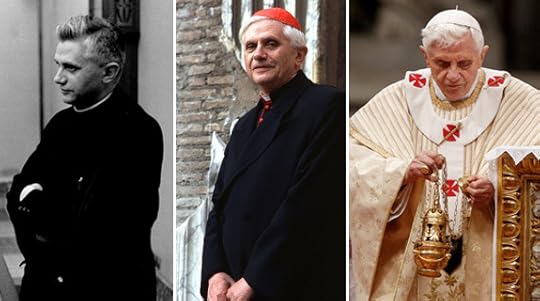
Benedict XVI and the End of the “Virtual Council” | Tracey Rowland | CWR
Up to the final days of his pontificate, Benedict XVI emphasized the importance of interpreting the Council in continuity with what came before it.
In one of the last acts of his pontificate, Benedict XVI gave
an address to the clergy of the Diocese of Rome on the Second Vatican
Council. In the address he drew a
distinction between what he termed the Virtual Council, or Council of the
Media, and the Real Council or Council of those who actually produced the
documents. He observed that since the
Council of the Media was accessible to everyone (not just to students of
theology who studied the documents), it became the dominant interpretation of
what happened at Vatican II, and this created “many disasters” and “much suffering.” Specifically, he mentioned the closure of
seminaries and convents, the promotion of banal liturgy, and the application of
notions of popular sovereignty to issues of Church governance. He concluded, however, that some 50 years
after the Council, “this Virtual Council is broken, is lost.”
From what comes across my desk in theological literature there is
still a lot of life in the Virtual Council, though it is true that it holds no
enchantment for young seminarians or members of new ecclesial movements. Thus,
the Church of the future, as a matter of demography, will be more closely
oriented to the documents of the Real Council.
The end of the
“Virtual Council”
When Blessed John Paul II lay dying he said to the youth who had
travelled to Rome to offer their prayerful support: “I have searched for you,
and now you have come to me, and I thank you.”
Less irenically he might have said, “I have tried to get through to you,
notwithstanding layers and layers of deaf and dumb bureaucrats, and now that I
am dying, the fact that you are here means that at least some of you
understood, and this is my consolation.” Similarly, Benedict seemed to be
saying to the clergy of Rome, notwithstanding all the banality, all the
pathetic liturgies, all the congregationalist ecclesiology, the Virtual Council
of the Media has lost its dynamism. It
is no longer potent. It no longer sets
the course of human lives; it no longer inspires rebellion. It too has become boring and sterile.
In this particular address Benedict divided the documents of the
Council into two broad categories:
A Cardinal on the Subway
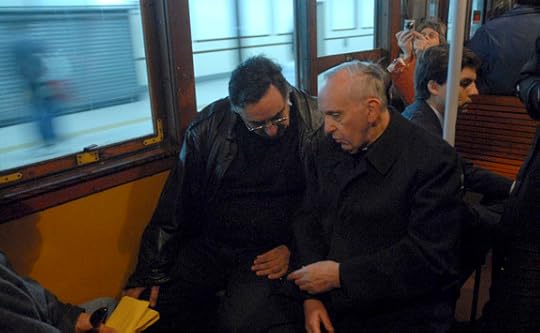
A Cardinal on the Subway | Andrea Tornielli | Catholic World Report
An excerpt from Francis: Pope of a New World.
From the chapter “A Cardinal on the Subway,”
Francis:
Pope of a New World
(Ignatius Press, 2013), by
Andrea Tornielli (translated by William J. Melcher)
How does
someone experience prayer who as a youth, on that long-ago September 21, during
a confession in a parish church, felt that he was surrounded by an embrace of
mercy and chosen for the priestly life?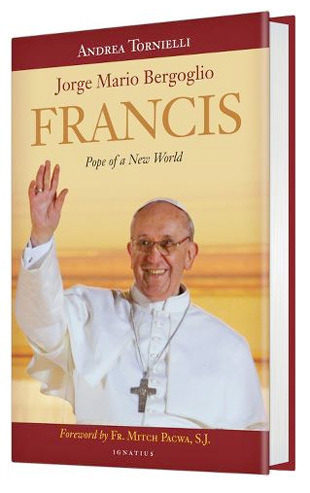
“For me, praying is in a certain way an experience of trust”, Bergoglio
explains in the book-length interview El
Jesuita,
in which our whole being is in the presence of God. This is where
dialogue, listening, and transformation occur. Looking at God, but above all
sensing that we are being watched by Him. This happens, in my case, when I
recite the Rosary or the psalms or when I celebrate the Eucharist. However, I
would say that I have this religious experience whenever I start to pray for an
extended time in front of the tabernacle. Sometimes I doze while remaining
seated and just let Him look at me. I have the sense of being in someone else’s
hands, as though God were taking me by the hand. I believe that it is important
to arrive at the transcendent otherness of the Lord, who is the Lord of all yet
always respects our freedom.
Jorge
Mario Bergoglio continues to consider himself as being the first in need of the
mercy that he preaches and to which he witnesses.
The truth is that I am a sinner whom the mercy of God called in a
special way. From my youth, life has entrusted to me tasks of governing—I had
just been ordained a priest when I was appointed master of novices and, two and
a half years later, Provincial—and I had to learn as I went along, starting
with my mistakes, because I made some. Mistakes and sins. I would be a
hypocrite if I said that nowadays I ask forgiveness for the sins and offenses
that I might have committed. Today I ask forgiveness for the sins and offenses
that I have actually committed.
“What
grieves me more”, Bergoglio also tells the journalists Rubin and Ambrogetti,
authors of the book-length interview, “is many times not having been
understanding and impartial. In my morning prayer, at the moment of the
petitions, I ask to be understanding and impartial, and then I continue by
asking for a lot of other things that have to do with the defections along my
journey.”
The new
pope taught for a long time. In his style of instruction, the encounter with
the person is an essential element. In the book El Jesuita, Bergoglio offers an example of this approach.
April 18, 2013
When President Obama Honored Father Kapaun
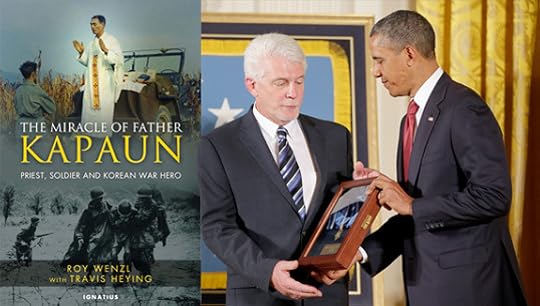
When President Obama Honored Father Kapaun | Roy Wenzl | Catholic World Report
A moment of grace in a town marked by division and backbiting
The
Miracle of Father Kapaun, my second book, was off the presses and
in our hands on March 26, only 15 days before President Barack Obama handed the
Medal of Honor to U.S. Army Chaplain Emil Kapaun’s family at the White House.
That’s crazy good
luck, publishing a story just as the president elevates your story subject as a
national hero. But it was no surprise to my co-author, Travis Heying, or to
me.
We started the
story by seemingly sheer coincidence, shortly after the Army revived Father
Kapaun’s Medal of Honor investigation after 55 years. We overcame problems with
almost no effort. We talked to former prisoners of war and researched Father
Kapaun off and on for five years, and every time we ran into one of those
problems that kills a complex project, the problem would go away in some weird
and wonderful way. This was a story that seemed to be kissed by the angels.
In 2009, as just
one example, we bought tickets to fly from our homes in Wichita, Kansas, to
Cumberland, Maryland, talk to North Korean prisoner of war camp survivor Bob
McGreevy, who had seen some of Father’s prison heroics. We flew even
though McGreevy, at the last moment, canceled our interview, saying that
talking about the Korean War gave him nightmares.
I didn’t even
bother to tell Travis that McGreevy had canceled until shortly before we rolled
up outside McGreevy’s house. I knew that our Kapaun Luck, as it might be
called, would intervene, as it always did. Sure enough, big, blunt Bob McGreevy
stepped out of his house and changed his heart. “Get in here,” he said,
uttering a venial-sin swear word. “I’ll talk.”
“I knew you would,”
I said.
Good things always
happened around Father Kapaun, on battlefields, in the North Korean prison
camp, in the worst conditions imaginable.
April 16, 2013
Happy 86th Birthday, Benedict XVI!
Today is the 86th birthday of Benedict XVI, pope emeritus, and this Friday, April 19th, marks the eight anniversary of his election to the Chair of Peter. We extend our best wishes and prayers to the pope emeritus on this happy occasion. In Milestones: Memoirs 1927-1977 (Ignatius) he wrote the following of his birth:
I was born on Holy Saturday, April 16, 1927, in [image error]
Hand to the Plow
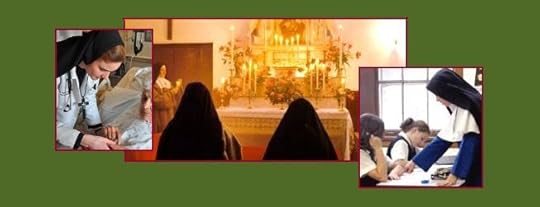
Hand to the Plow | Sr. M. Regina van den Berg, F.S.G.M. | Homiletic & Pastoral Review
The religious sister’s separation from family and friends means that … in order to “put one’s hand to the plow” (Lk 9:59-60) one may not look back … in order to attend to the “one thing necessary.”
Introduction
One of the distinctive marks of the consecrated religious life, both in its apostolic and contemplative forms, is separation from the world. The Code of Canon Law states that “the witness of religious to Christ and the Church implies distancing from the world.” The signs of this separation from the world include the observance of enclosure, the wearing of the religious habit and the use of title, “sister.” The vows of poverty, chastity and obedience separate the consecrated religious sister from what the world seeks: the possession of goods and the conveniences of life, the good of marriage and family, and the good of ordering one’s own life. The consecrated religious detaches herself from these goods, in order to belong entirely to Christ, her Spouse.
The religious vocation is an eschatological one; it is ordered to eternity. The consecrated religious is not of this world, even as Christ was not of this world. In order to live for eternity, she must be detached from the things of the present and passing world. In order give all her love to her Spouse she cannot see, she needs to be detached from the world she can see.
Our contemporary society presents a challenge to the living of being separated from the world, because there are so many ways in which the world is able to enter, even into the enclosure, by means of modern communication technology. In this article, I would like to examine, first, the importance and meaning of separation from the world, especially as it pertains to the separation from family and friends. I will then examine the challenge posed to living separation from the world by some modern means of communication.
Pope Benedict XVI’s “First Convert”
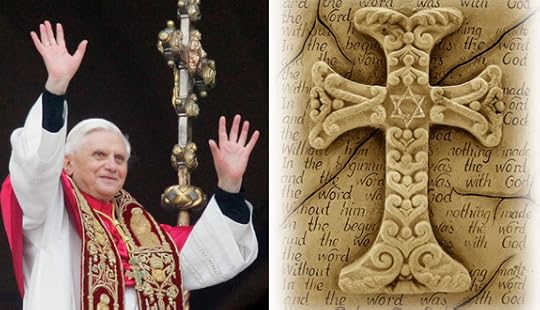
Pope Benedict XVI’s “First Convert” | Roger Dubin | Catholic World Report
The story of how a New York Jew wrestled with Christ and became Catholic
Groucho
Marx once said, “I wouldn’t want to belong to any club that would have a guy
like me as a member.”
So began my witness testimony at the Easter Vigil on April 7,
2007, when my wife Barbara and I entered the Catholic Church. For a New York
Jew, who’d detested the name “Jesus” for as long as he could remember, to be
standing before a packed congregation at Sacred Heart Church in Prescott,
Arizona, having to recount in three minutes how he got there—well, you can
imagine what a surreal a moment that
was.
Yet now, when instead of three minutes I have three thousand
words, plus six years as a Catholic, the resignation of Pope Benedict XVI and
the election of Pope Francis for perspective, the task is, if anything, even
more daunting. But Carl E. Olson, editor of Catholic World Report, asked
me to give it a shot, so here goes.
On April 2, 2005, there came the news of the death of Pope John
Paul II. I’d always admired the pope for his courage in confronting the horrors
of communism, and for aligning with President Reagan and Prime Minister
Thatcher in a united front that led to the downfall of the Soviet Union. Yet as
a spiritual leader he meant nothing to me.
Nevertheless, Barbara and I found ourselves becoming involved in
the events and the funeral as they unfolded on television. Even the typically
skewed commercial coverage couldn’t disguise the tributes from all corners of
the globe, and the love for the pope and grief at losing him from Catholics and
people of every faith. At some point in the two weeks following, Barbara—a
long-lapsed Protestant who’d never lost her regard for Christianity—turned to
me and said, “You’ve got to get religion, Roger. You’ve been drifting way too
long.”
Early on the morning of April 19, I left on a business trip, first
taking the commuter flight from Prescott, our home since 2001, to the Sky
Harbor Airport in Phoenix. There was a wait before my next flight to the west
coast, so I stopped for coffee, and soon after I arrived at the gate, the white
smoke appeared over the roof of the Sistine Chapel on the television monitor.
Sipping my cappuccino, I watched with a large group of travelers, interested—as
a news hound mostly—in who’d been chosen. From my casual observation, however,
quite a few in the crowd were Catholics, and far more invested in the outcome
than I.
When the announcement was made that Cardinal Ratzinger had been
elected, people around me seemed to register either shock or joy.
April 15, 2013
It's Not a Conspiracy, It's a Culture
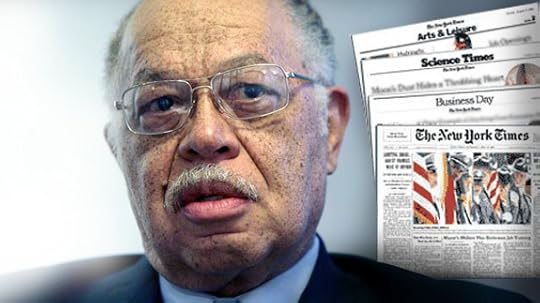
It's Not a Conspiracy, It's a Culture | Carl E. Olson | Editorial | Catholic World Report
The silence about Kermit Gosnell's trial demonstrates the dominance of the culture of death and moral deafness.
I don't take in much baseball or golf, but I do usually watch some of the World Series and portions of the Master's golf tournament. As sporting events, both have a certain timeless quality (I won't get carried away and use the empty word, "magical"), but also a fair share of sporting drama. Besides, they are mostly free of discussions about politics, although they tend to be increasingly politically correct. Regardless, it was interesting to watch and listen to some of the serious arguments and intense discussions that commenced once news broke that Tiger Woods had dropped a ball (after his tee shot went into the water on the 15th hole on Friday) a full two yards behind his original spot, which led to a two stroke penalty. Mayhem insued, and there were some folks insisting that the #1 golfer in the world should have disqualified himself.
Reflecting on the spectacle of adults arguing over 72 inches of turf, I tweeted the following about 24 hours after the Tiger story broke:
Google news search brings up 39,000 links for "Kermit Gosnell"+"trial" but 145,000 for "Tiger Woods"+"penalty". MSM should be disqualified.
Unless you watch only CNN or read only the New York Times, you know about the story about the non-story within the story of the murder trial of abortionist Kermit Gosnell. The trial has been going on for nearly a month in Philadephia, but has received even less coverage from the mainstream media (MSM) than did the celebration of Easter. One could glibly joke that Gosnell would have garnered far more attention if he were a junior high boy pretending to shoot fellow students with a crooked twig during recess, except that story would have undoubtedly made it on the MSM radar within hours, if not minutes. Last Thursday, CWR's managing editor, Catherine Harmon, explained the particulars of the story and noted the media silence, which was itself fast becoming a story. Since then, the uproar—via e-mails, tweets, Facebook, and so forth—from outraged Americans (and others, I presume) rose to the point that the New York Times finally relented and published an editorial this past weekend on the subject of abortion doctors, abortion clinics, and the fight for goodness and truth:
Hysterical Hatred and the Halls of History
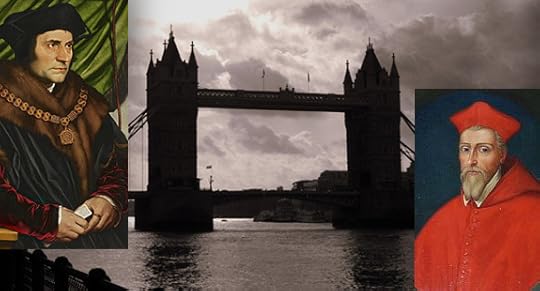
Hysterical Hatred and the Halls of History |
Michael Coren | Catholic World Report
Both are plain to see and ever with us, but only one has
lessons worth learning.
I write this column while looking out onto Westminster
Bridge, Britain’s Houses of Parliament, and a London still pulsating with news
of the death of former Prime Minister Margaret Thatcher. Pulsating indeed,
because she changed the beat, the rhythm, and the pace of this country, and
fundamentally and irreversibly transformed the nature and style of the United
Kingdom. As such, she is revered as well as reviled, and that polarization
extends to the Catholic reaction to her passing. There are Catholics here in
Britain who believe she was one of the last political leaders to properly
appreciate the link between Europe, democracy, and Christianity. Others,
especially in Ulster and northern England, can barely contain their anger at a
woman they believe destroyed their way of life.
The truth about Margaret Thatcher reflects a greater truth
about how the world approaches history, facts, and downright hysteria and
propaganda, and reflects directly to the Church and how it is treated in the
popular imagination
Much, if not most, of what Mrs. Thatcher has been accused of
is pure fantasy, and the reaction to that campaign of disinformation has been
downright obscene: street parties celebrating her death; the singing of “Ding
dong the witch is dead” (with “b” replacing “w”); the public announcement that
people will urinate on her grave. Many of these malicious idiots weren’t even
born when she was in office, and those who were have little to complain about,
if truth be told. But it is the extent and excess that is so repugnant. There
are numerous politicians whom I loathe, but not one whose death would lead me
to rejoice.
April 13, 2013
The risen Christ to the restored Peter: "Feed my sheep!"
Readings:
• Acts 5:27-32, 40b-41
• Ps 30:2, 4, 5-6, 11-12, 13
• Rev 5:11-14
• Jn 21:1-19
Years ago, not long after entering the Church, I called into
a local radio program hosted by two Fundamentalist Protestants. They had
been discussing Catholicism and making some claims that were more than a bit dubious in nature. In the course of our conversation (which was fairly civil,
thankfully), the topic arose of a great apostasy in the early Church. Long
story made short, they insisted the Church had “apostatized” within
years—perhaps just months!—of Christ’s Resurrection and Ascension.
One reason for this belief (which I knew well from my
Fundamentalist upbringing) was the assumption that the first Christians soon began
embracing structures and doctrines that were “Romanish” in nature. Rather than
deal with the historical record, these two sincere, intelligent men deemed it
better to skip ahead to the present-day, seeking to restore the Church they
thought Jesus really meant to establish.
They made it clear they would not follow a pope.
That incident came to mind as I considered today’s readings.
The readings during Easter—which include passages from Acts of the Apostles in
place of the Old Testament readings—make numerous connections between the authority,
mission, and power of the Risen Lord and the position and actions of the
Apostles. There is a clear and consistent connection between the person of
Jesus Christ and the people who took up “the Way” (Acts 9:22) and who were
eventually called “Christians” (Acts 11:26). And this connection included
structure and authority.
“Well, of course,” you might say, “everyone knows that.” But
this basic and fundamental fact is routinely denied, especially by those who
try to uproot Jesus from his historical moorings and detach him from the
establishment of Church structure and use of ecclesial authority. A common line
of attack is to pit Jesus against “organized religion,” which is almost always
code for the Catholic Church and her Magisterium.
Today’s readings depict something different, however, from
this rather anarchic interpretation. The Gospel reading is especially
instructive. It describes a key encounter between the risen Christ and the
apostles, focusing on the head apostle, Peter. Days earlier, the rash fisherman
had denied Jesus three times while huddled in the cold near a charcoal fire
(Jn. 18:18-27). Now he came from his boat to a charcoal fire started by his
Master, who invited he and his companions to eat.
The Good Shepherd then asked Peter a single question three
times: “Do you love me?”
In responding to Peter’s affirmative replies, Jesus did not
say, “Be good” or “Hang in there!” Rather, he directed him to feed and tend his
sheep. This is a reiteration and affirmation of the authority Jesus gave to
Peter in granting him the keys of the Kingdom (Matt. 16:16-20). It builds upon
an important and lengthy discourse by Jesus about his identity as the Good
Shepherd (Jn. 10). We are familiar with the image of the humble, loving
shepherd, but we sometimes overlook how this image is as much about royal
authority and messianic identity as it is about pastoral care.
Jesus’ discourse was based in part on a prophecy given
through Ezekiel: “And I will set up over them one shepherd, my servant David,
and he shall feed them: he shall feed them and be their shepherd” (Ezek.
34:23). Jesus is the Davidic King, and he established a Kingdom that exceeds
the wildest dreams of any earthly king. “My servant David shall be king over
them,” God told Ezekiel, “and they shall all have one shepherd” (Ezek. 37:24).
But if Jesus is the one shepherd, why appoint Peter to also
be a shepherd? Because the Vicar of Christ, the apostles, and the bishops are
“partakers of His consecration and His mission” (Lumen Gentium, 28). They have a specific place in the Body of
Christ, a vocation to pastor and feed the one flock of the one true God. And so
Jesus, after asking his three questions of Peter, simply said: “Follow me.”
Why? So we can find, receive, and follow him.
(This "Opening the Word" column originally appeared in the April 18, 2010, issue of Our Sunday Visitor newspaper.)
Carl E. Olson's Blog
- Carl E. Olson's profile
- 20 followers



